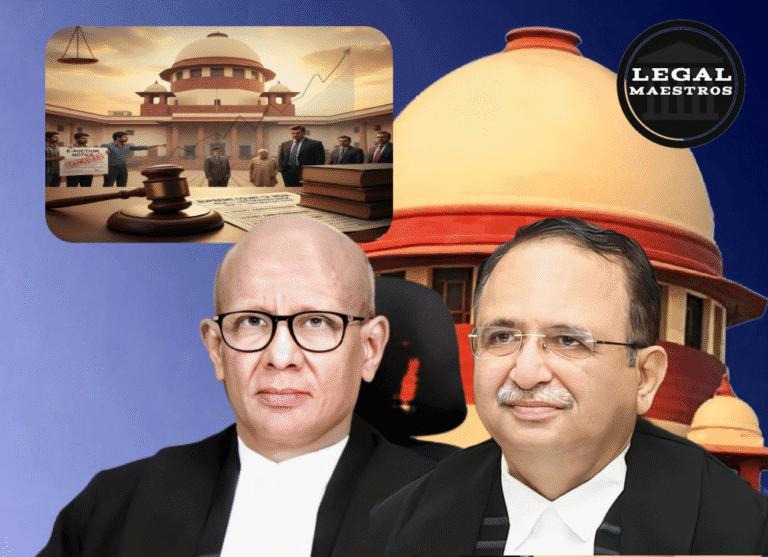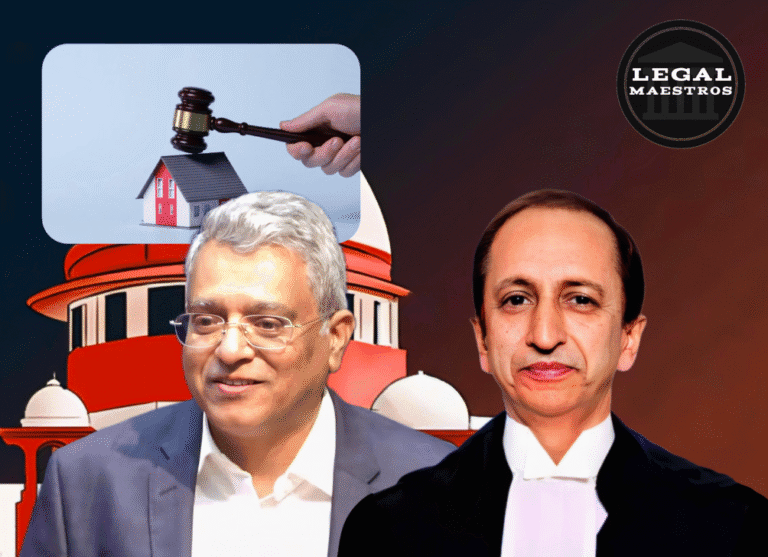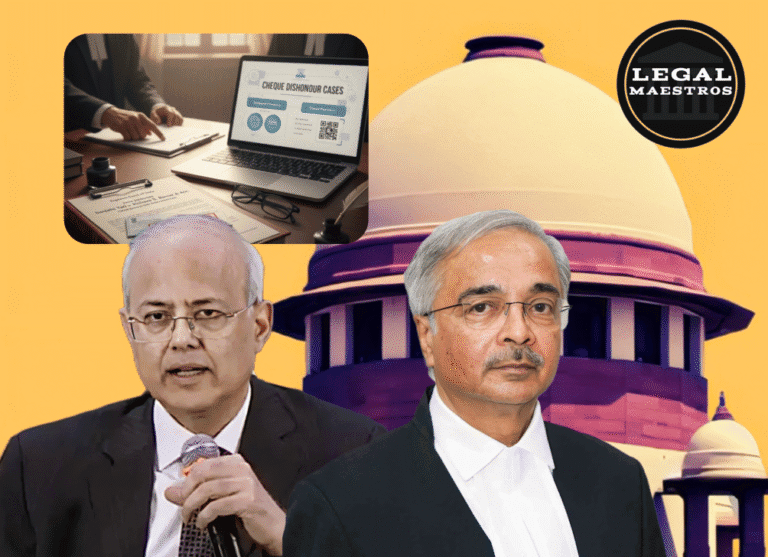
On April 22, 2025, India Supreme Court decided a case involving the Managing Director, Kamieni Hospitals v. Peddi Narayana Swami Etc. The root of the matter in the case entailed medical negligence and financial burden that accompanies it.
This appeal arose as a result of the ruling of National Consumer Disputes Redressal Commission (NCDRC).
The NCDRC with whom an agreement already has been reached has upheld a decision of the Andhra Pradesh State Consumer Disputes Redressal Commission (APSCDRC) to the effect that the hospital was guilty of negligence and awarded 20 lakh rupees in compensatory damages wherein the compensation was shared between the hospital (15 lakhs) and the doctor who was present there (5 lakhs). The Supreme Court accepted the argument that the hospital was negligence, but reduced the monetary quantum which it was supposed to pay to 10 lakhs.
This case raises very pertinent questions about what medical institutions should be accountable to and what they should be expected to do and what courts should be expected to do as a way of determining how much should be given to victims of medical negligence.
Description of the Case
The case concerns the tragic demise of Peddi Narayana Swami, a 27-year old son of Respondent No. 1. The deceased was a graduate carrying a B.Tech degree and employed in a factory which manufactured soaps, where they were said to be financially assisting their family.
The patient died after being treated at Kamieni Hospitals, and his father filed a complaint with the APSCDRC, saying that the hospital was negligent.
The State Commission said that both the hospital and Dr. J.V.S. Vidyasagar were to blame. The NCDRC agreed with this finding and ordered the hospital to pay ₹20 lakhs, with ₹15 lakhs going to the hospital and ₹5 lakhs going to the doctor. The hospital took this ruling to the Supreme Court, saying there was no fault and arguing over the amount of damages.
Reasons for Appeal
The hospital said that the physicians had followed all the right medical procedures, gotten approval from the patient’s family members, and taken the steps that a good professional would have taken. It said that there was no professional medical opinion or literature to back up the charge of carelessness. So, it was claimed that putting someone on the hook for anything was not fair.
The hospital also said that ₹15 lakhs was too much, particularly because there was no clear proof of lost income or other financial problems caused by the patient’s death.
The Respondent’s Stand
The complainant’s lawyer stood up for the results of the APSCDRC and NCDRC. They stressed that the patient was young, educated, and working, and that he or she had a bright future ahead in terms of job progression. They said that the family deserved the money because of these things and the emotional pain they had to deal with. They also said that the data and evidence proved that the hospital did not give enough treatment, which backed up the charge of negligence.
The Supreme Court’s Results
The Supreme Court looked closely at the pleadings, medical data, and judgments made by lower courts. It agreed with the conclusions that both the hospital and the doctor who treated the patient were negligent in their medical care. The Court decided that the dead did not get the level of care that was necessary and that the hospital was appropriate to be held responsible for what its staff performed.
The Court did, however, agree that there was a worry about the amount of compensation. It said that even though the patient had a B.Tech degree and was making a low wage, the evidence given did not warrant a ₹15 lakh payment from the hospital. The Court said that compensation must be fair, just, and reasonable, not too much or too little.
Changing the Pay
The appellant hospital had previously put ₹10 lakhs in the Registry, which had earned interest over time, per the Court’s earlier orders. The Supreme Court decided that this sum, plus interest, would be enough to make up for the complainant’s losses, given the facts and circumstances.
The Court kept the ₹5 lakh fine on the doctor, which had previously been paid and accepted. People thought that this payment, together with the ₹10 lakhs (plus interest) from the hospital, was enough to make up for what happened.
The Court threw out the appeals and ordered the payment of the deposited sum plus interest to the plaintiff.
Legal Rules That Apply
This decision confirms a number of basic legal ideas:
First, hospitals may be held responsible for the careless activities of its workers, including physicians, particularly while they are doing their job. The hospital can’t get out of being responsible only by blaming one doctor.
Second, to prove medical negligence, you have to establish that the doctor or hospital didn’t provide you the same level of care that a qualified medical practitioner would have given you in the same situation.
On 22 nd April 2025, the India Supreme Court ruled in the managements case of the Managing Director, Kamieni Hospitals v. Peddi Narayana Swami etc. The etiology of the case involved medical negligence and economic constriction that comes with it.
This call was made on account of the decision made by National Consumer Disputes Redressal Commission (NCDRC).
An agreement to the same effect was reached with the NCDRC who has sustained a judgment of the Andhra Pradesh State Consumer Disputes Redressal Commission (APSCDRC) to the effect that the hospital had been negligent and awarded 20 lakh rupees in terms of compensatory damages where the damages were shared by the hospital (15 lakhs) and the doctor who was present there (5 lakhs). The Supreme Court did not argue further with the fact that the hospital was negligent; what they did is reduced the amount of money that the hospital was supposed to pay to 10 lakhs.
The case presents a very relevant question concerning what the medical institutions are to be answerable to, what they are expected to do and what the courts are expected to do as one of the ways of assessing how much to give the victims of medical negligence.
Case Description
The case deals with the sad death of Peddi Narayana swami who was a 27 year old son of respondent no. 1. The victim was a graduate with a B.Tech degree and worked in a factory that produced soaps, and there he/she used to support his/her family financially.
Wider Effects
This case is very important for both the healthcare business and consumer protection legislation. It achieves a compromise between preserving patients’ rights and without getting in the way of real medical work. Hospitals and other healthcare providers are reminded that they have a responsibility to deliver high-quality treatment and that they may be held legally responsible if they don’t.
At the same time, it also cautions consumer groups to carefully consider compensation. Overcompensating without a good reason might make judicial remedies less fair, particularly in areas like healthcare where the results may not always be clear even after careful planning.
The Court also made it clear that India’s justice system is still based on procedural fairness, which includes the right to appeal and a full evaluation of the evidence.
Last but not least
The Supreme Court’s decision in Kamieni Hospitals v. Peddi Narayana Swami shows how the law may be applied in a complicated way in circumstances of medical negligence. The Court favored the cause of justice and equity through the statement that the accused was careless but still the payment was making some sense.
The above ruling will assist the future medical negligence cases by ensuring that the victims receive the right amount of money and the medical institutions are not penalized too severely. Ultimately, the Court told that human life required care, responsibility and respect, however, the compensation should be result-oriented, and reasonable.



